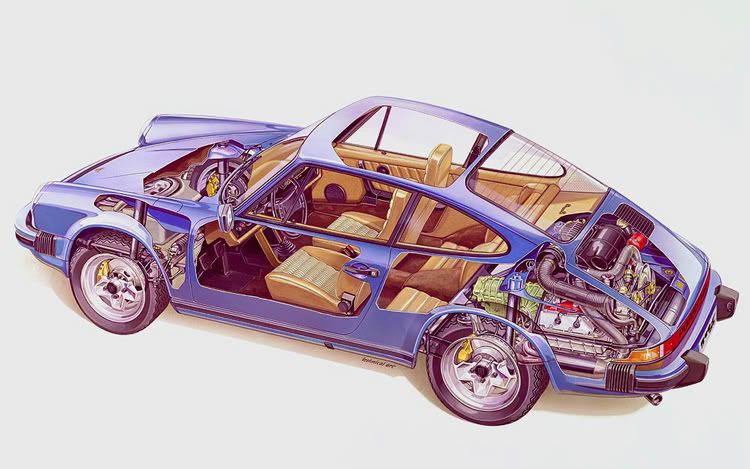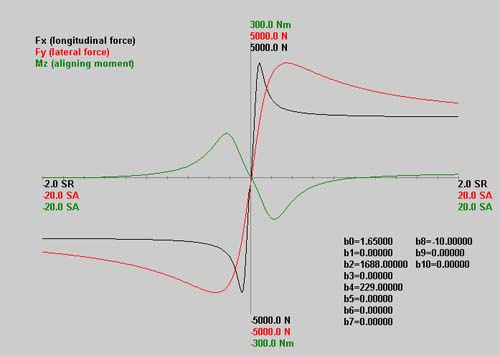Thanks, DaveKillens and m3_lover. It is an honor to be invoked, masters! And a shame, because the sad truth is that until recently, the only preoccupation of civil engineers was for the traffic not to erode the road, not the inverse.
Who we need here is mickey, a true chemist. I guess he won’t agree this is another "dark" subject of the racing world, poorly developed, mainly because he knows much more than me about it. Anyway, here I start to divagate on one of my "terse" two-pages-posts...

In short, asphalt is made of a highly controlled material (bitumen) and a poorly controlled one (rock). Few people know asphalt is made with only 5% of bitumen (the dark gooey thing) and 95% is crushed rock. That is the simple reason for the variability of the wearing of tires on different tracks. You can skip the rest of my post.
Rocks are, well, temperamental materials to work with. I tend to say that the painters and the highway builders are the last professionals in the world that have to fabricate their own raw materials. Every painter makes his painting oils and every highway engineer has his quarry (it is the first thing you look for when you go into a work) and produces its own asphalt. It is like McLaren having to operate a carbon mine to produce a carbon fiber chassis
Bitumen is more controlled than rocks, but mickey can explain to us that it is just another thing we find "thrown around" and that we can try to tame but not to control like, for example, steel. Like rock, bitumen it is another complex material, made of many substances. And asphalt is made of both.
The tests developed to understand the abrasion, were not made for controlling tire wear but for avoiding 1) "loss of aggregate" (loss of rock), which means that the rocks are pulled out of asphalt (low adhesion, lack of bitumen) or 2) that the traffic wears the rock (low resistance to abrassion).
Loss of aggregate by low adhesion (asphalt layer too thin or lack of bitumen)

Mickey can also explain how the art of mixturing asphalt and rock with mininimum expense and maximum density can go wrong and produce too much asphalt on the surface, detrimental to wheels (it has a high coefficient of friction on soft tires).
We can also control how hard the rock is: if you don't, the track can develop what is called (in Spanish, can't think of the English term for it) "hard heads", which means that the bitumen wears, but the little pieces of rock are so hard that they don't wear accordingly. The little rocks protrude (hence the term "hard heads") and make the track slippery because they get polished.
While they get polished, they wear enormously the tires.
We use a primitive test, used by generations of "asphalt alchemists", which is a big drum full of steel balls that rotates (a Los Angeles machine). You put your rock in it and you turn it for a while: then you measure how much the rock was crushed. There are limits to avoid "soft" and "hard" aggregates. That's the "deep reason" why the tracks wear so differently the tires: they are really made of a material (rock) that varies from region to region or quarry to quarry and the tests developed to control its hardness have wide margins.
Los Angeles machine

We control carefully what we call "the gradation”, or the relative sizes of the rocks (from the tiniest ones to the bigger chips). Mixing sands and gravels of different "gradation" you can get any density or porosity you wish, the same way you mix basic colours to get any colour of the spectrum. The little rocks go between the larger pebbles and the tiniest occupy the space between the little ones. There are relationships that govern the mixture of different sizes of aggregates. If you put too much tiny rocks you got a smooth asphalt, with low friction and viceversa.
Nowadays I suppose any decent track uses
porous asphalt for safety reasons, to allow the water to drain through it when it rains, and minimize the mist during races. In this case you have conflicting goals: the more porous the asphalt, the more it wears the tires. There are mixtures with
double layers that don't degrade tires so much while mantaining porosity.
The studies on the influence of the kind of rock on tire wear are few but they exist. There are rules of thumb. It is clear that alluvial crushed rock (river pebbles) are harder than quarry rock: the river dissolves or erodes the softer rocks. Volcanic rocks (granite) tend to be harder than metamorfic (slate). However, first of all, you have to learn to identify a rock, which is also an art, like learning the different kind of trees or spotting birds, if you allow the comparison. The situation is worsened because there is really no technology of rock construction like the ancients had: we have been focusing in metals for the last 3.000 years...

The main reason for so many "recipes" in road surfacing comes also, I think, from the ignorance about the mechanisms for friction engineers have: less than five years ago we did not have a theory about how the coefficient of friction works, as
I mentioned elsewhere.
This
new theory calculates the interaction of tire and asphalt at different "size levels". Now that we have a theory that can predict numerically the friction between tire and road, I expect further developments in the field of pavement materials. But we are not there yet: we are not able to measure the microtexture, even if we have a way to calculate its influence.

You can judge the relative friction of a track using a variety of machines, from the simplest (you spread sand on the asphalt and measure how much is absorbed by the irregularities) to the complex (different apparatus for measuring friction mechanically).
If you really are into it, you can measure the "riding roughness" of the asphalt at your track (millimiter irregularities) with the International Roughness Index (
IRI). This measures how much your "derriere" moves up and down in your car when you move along the road at a certain speed. Roughly speaking, if the IRI is over 3 meters per kilometer, the road is not flat enough and you must repave or resurface.
Irregularities in the braking zone are hard on tires. At a racetrack, this is caused by soil humidity changes, as the cars weighs practically nothing. The damage to pavement is proportional to the fourth power of the load, which means that a single truck that weighs 50 times what an F-1 car, can do as much damage to your track as 500.000 race cars. A single truck can do more damage than all the race cars during the life of the circuit.
To measure the
friction abilities of your track, you use the International Friction Index (
IFI) or its european version the EFI (sort of dollar vs. euro

). The measurement devices are relatively simple and there are
correlations between the IFI and the friction factors of tires on asphalt at different speeds, which allows you to design your asphalt to your "frictional" liking.
If your track has no spiral transitions but only straights and circular curves of various radius, then you have sections of the straights with superelevation. This can increase the load on the tires up to 10-20%, as you have to counter-correct before the curve if you want to go straight. Most people is not aware of this counter-correction (few pilots I know can distinguish both types of road) but they do it unconsciously anyway (check next time you go riding shotgun on an old road with only circular curves).
So, to answer Ted:
You could resurface the track using softer, less cristalline rocks, use rocks from a quarry instead of rocks from a river beach, design the probable friction factor for a desired speed by testing the IFI of different test mixtures before resurfacing, use a less open asphalt or concrete by controlling its porosity and gradation, use a double layer with increasing porosity with depth, measure the IRI of the track regularly and relevel the parts that go over a number, put drainage under the road to avoid large bumps, use paved areas instead of gravel traps to diminish the amount of water seeping under the road and forbid trucks on the track. Oh, and maintain the track like a "zen garden".
For the second part of your answer, I can only suggest altering the layout of the track to include transition curves to avoid flat, hard to drain sections and "warped" braking zones and researching new materials for track surfacing, like the FHWA did with the SHARP and the Super-Pave initiative.
Imagine a polyurethane track... fluorescent yellow, for example, or deep blue coloured,
and matching polyurethane tyres on the cars. I bet we wouldn't need aerodynamics if we pick a material for the surface with a high enough coefficient of friction.












